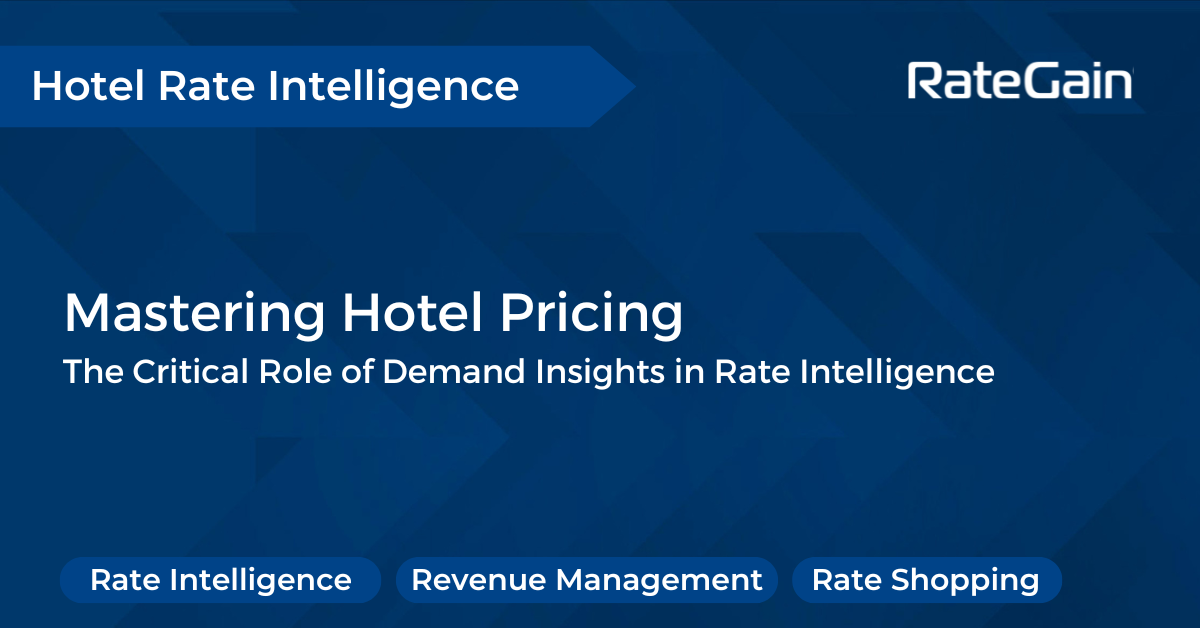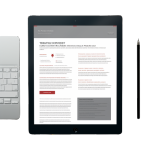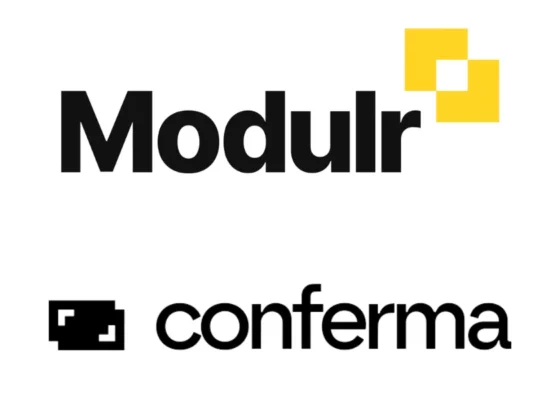
In today’s volatile travel landscape, demand patterns shift faster than ever. From sudden surges in bookings due to a major event to market slowdowns driven by macroeconomic shifts—hotels are constantly racing to keep pace. Amid this uncertainty, one capability consistently separates revenue leaders from laggards: demand intelligence.
This blog unpacks what demand intelligence really means for hotels, how it impacts pricing strategies, and why tools like Navigator by RateGain are redefining revenue optimization for hoteliers worldwide.
What is Demand Intelligence in the Hotel Industry?
Demand intelligence is the process of collecting and analyzing real-time signals that reflect current and future travel intent. In the hospitality industry, this means moving beyond just historical booking data and instead capturing forward-looking insights that help hoteliers forecast demand patterns with greater accuracy.
These signals can come from various sources, including online search behavior, booking engine activity, macroeconomic indicators, competitor movements, seasonality trends, and broader travel ecosystem trends. The goal is to understand who is traveling, where they are going, when they are going—and why.
Unlike traditional forecasting models that rely heavily on past performance, demand intelligence is proactive. It empowers revenue managers to make timely and strategic pricing decisions based on what the market is likely to do next, rather than what it did last month.
The Connection Between Demand Intelligence and Pricing Strategy
Pricing without demand insights is like flying blind. A revenue manager might increase rates assuming high demand—only to find low pickup. Or they might keep prices flat during a shoulder season—missing out on hidden spikes driven by emerging demand.
Demand intelligence allows hoteliers to:
- Identify unusual demand trends before competitors
- Adjust rates with confidence in real time
- Avoid revenue loss from over- or underpricing
- Shift from reactive to proactive pricing models
For example, if search trends show a sudden rise in travel intent for a particular city due to a concert announcement or a major business conference, demand intelligence surfaces this signal before bookings occur, enabling the hotel to optimize its rate strategy ahead of the curve.
Key Components of an Effective Hotel Rate Shopping Tool
An advanced rate shopping platform must be more than just a competitor pricing scraper. It must serve as a command center for commercial teams, pulling together relevant, timely, and actionable data in one place. Key components include:
- Real-time competitor rate monitoring across OTAs, brand.com, and metasearch
- Rate parity tracking to identify violations
- Customizable comp-sets based on geography, segment, and property class
- Visual dashboards for rapid analysis and decision-making
- Historical trend analysis to contextualize pricing decisions
- API integrations with RMS, PMS, and BI systems
These features not only enable better pricing decisions but also drive cross-functional alignment between revenue, sales, and distribution teams.
How Rate Shopping Tools Capture and Analyze Demand Signals
The most powerful rate intelligence tools today incorporate demand-side signals into their analytics framework. This includes tracking:
- Search trends and booking intent
- Changes in availability across competitor channels
- Localized demand spikes (events, holidays, flight seat availability)
- Day-of-week and length-of-stay patterns
- Pickup velocity compared to comp-set
The integration of these signals helps hoteliers determine whether they are priced competitively—not just in relation to other hotels, but also in the context of market demand. Real-time alerts and anomaly detection systems further strengthen the response mechanism.
Implementing Demand-Based Pricing Strategies Using Rate Intelligence
Here’s a simple framework for building demand-based pricing strategies:
- Segment your market by business/leisure, geography, channel, and booking window.
- Monitor demand signals in real-time using your rate shopping platform.
- Define rate thresholds linked to demand tiers (e.g., surge pricing rules).
- Automate price updates when demand crosses preset triggers.
- Measure outcomes and refine strategies using performance data.
Platforms like Navigator simplify this workflow by combining both demand and rate data, along with automated recommendations.
Common Pitfalls in Implementing Demand-Based Pricing
Even experienced hoteliers can stumble when implementing demand-led pricing. Common mistakes include:
- Over-reliance on competitor rates without demand context
- Ignoring micro-trends in city submarkets or niche demand pockets
- Using static pricing during dynamic demand windows
- Lack of integration between rate intelligence and pricing execution systems
Avoiding these missteps requires not just data—but the right intelligence platform that makes the data usable and actionable.
RateGain’s Navigator: The Gold Standard in Demand Intelligence
While most rate shopping tools offer basic competitor rate monitoring, Navigator by RateGain redefines what’s possible by integrating holistic, multi-source demand intelligence.
What sets Navigator apart?
- Hyper-granular demand coverage across hotels, airlines, events, city, and country levels
- Real-time analysis of travel intent, not just bookings
- Dynamic city heatmaps that reveal where demand is rising or falling
- API-ready architecture for fast integrations with RMS, PMS, or BI systems
- User-friendly interface that allows even non-technical users to take action quickly
With Navigator, hotels don’t just observe demand shifts—they act on them immediately to improve RevPAR, occupancy, and profit margins.
Proof of Performance: Why Hotels Choose Navigator
Hotels using Navigator have reported:
- Up to 15% increase in RevPAR during high-demand periods
- 50% reduction in manual pricing effort
- Improved parity compliance and distribution visibility
- Strategic alignment between revenue and sales teams via shared dashboards
Whether you’re an independent hotel or a global chain, Navigator’s flexibility, scalability, and unmatched data coverage make it the preferred platform for future-ready revenue management.
Conclusion: Why Demand Intelligence is No Longer Optional
In 2025, relying solely on past data or static pricing models is a recipe for underperformance. Demand intelligence is no longer a “nice-to-have”—it is the foundation of modern revenue strategy.
And while many platforms claim to offer insights, only Navigator combines comprehensive demand visibility, real-time pricing intelligence, and seamless usability in one unified tool.
Ready to unlock the full power of demand intelligence?
Schedule a personalized demo of RateGain’s Navigator platform and discover how to move from reactive pricing to proactive revenue leadership.
Or…
Start your free 30-day trial and see demand insights from hotel, airline, event, and travel data come to life—only with Navigator.






